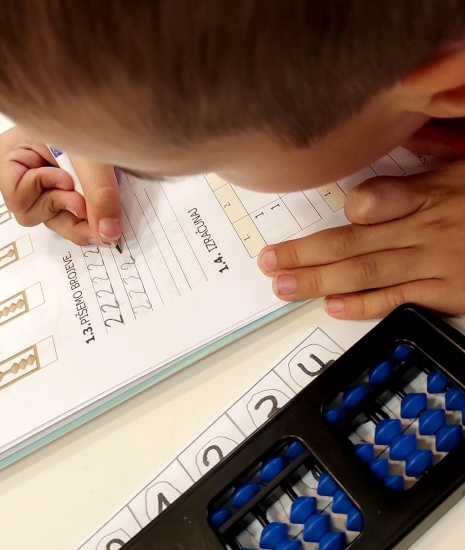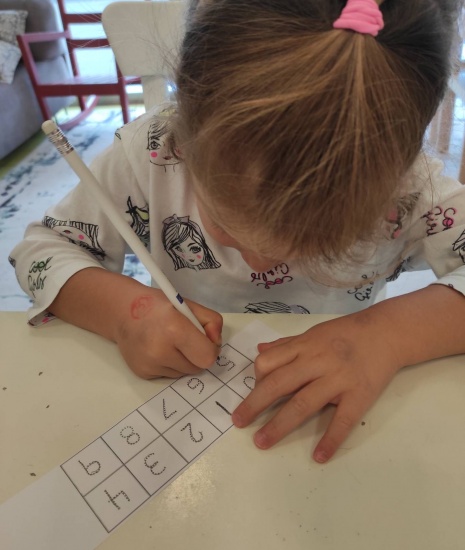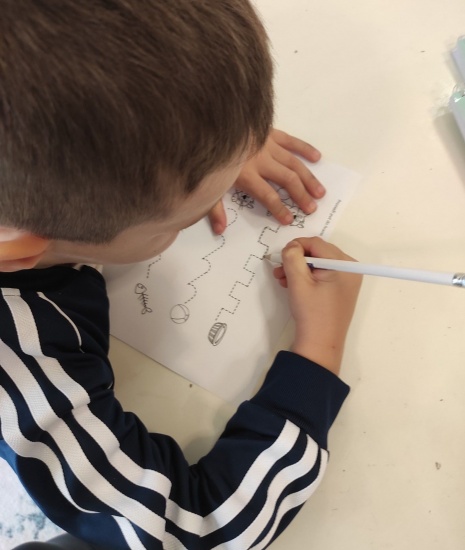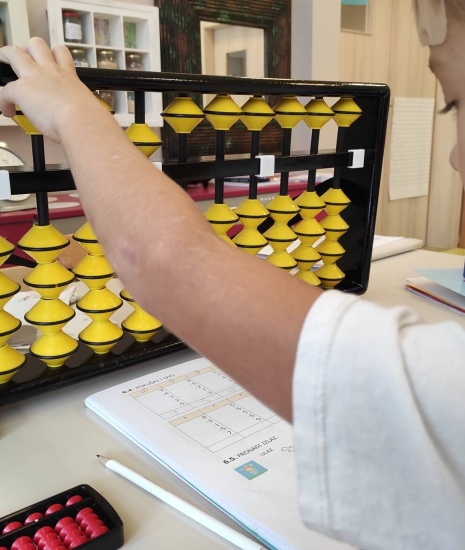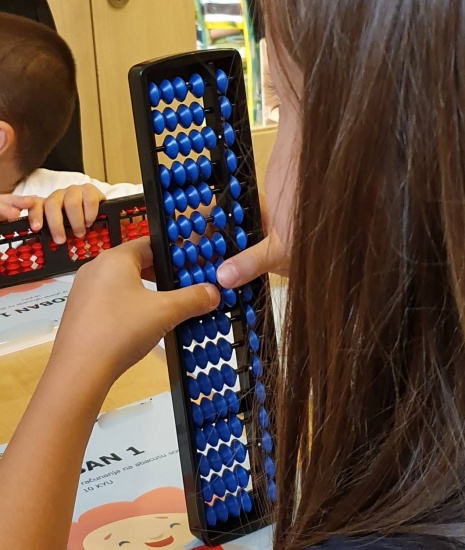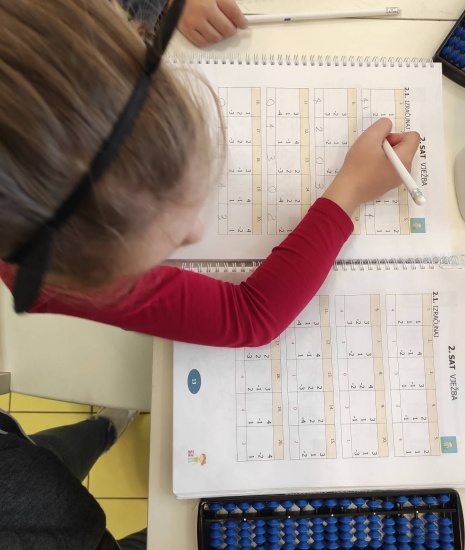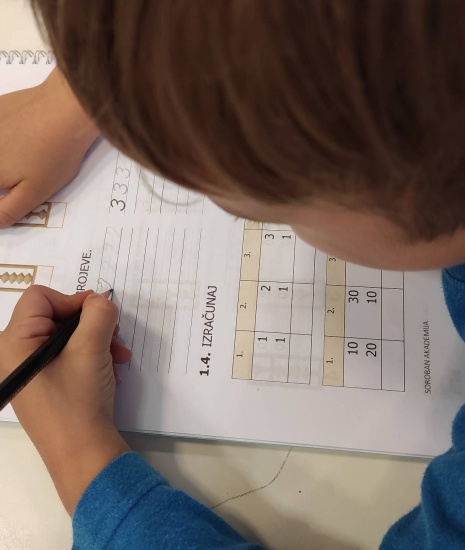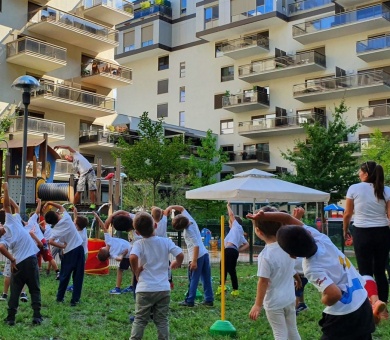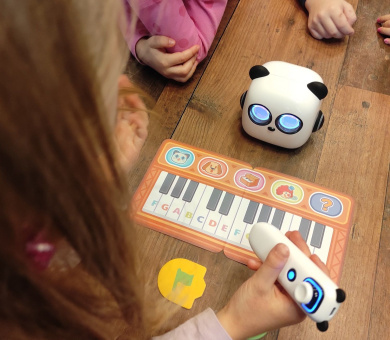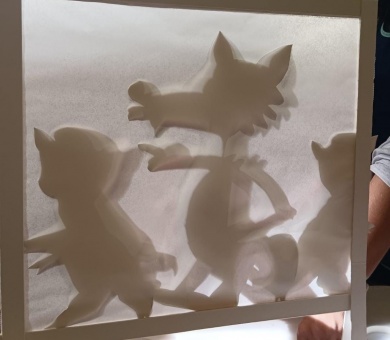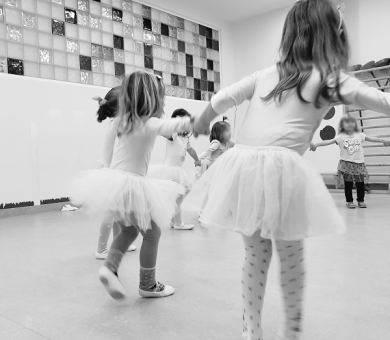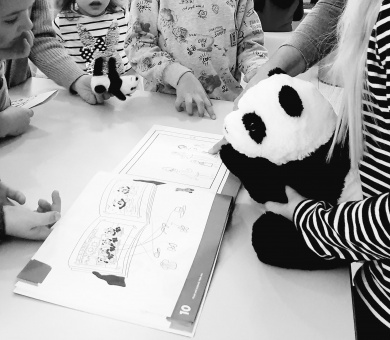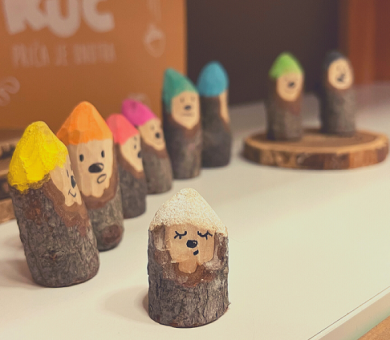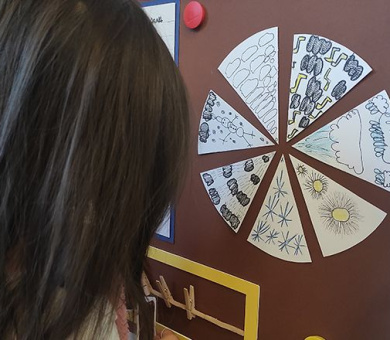Abacus

The story of the abacus begins in Mesopotamia, with pebbles in the sand. Over a long period of time, the idea traveled across the continent to reach Japan in the Edo period. During that period, priests in temples would teach children to read, write, and calculate on the abacus. The development of Japanese education started in these schools, and it should also be noted that, in the largest economies of East Asia (China, Japan, Taiwan, Korea), the abacus is still part of the curriculum in most schools. Because of the way it is used, it is also suited for preschool children in order to familiarize themselves with the idea of numbers, which has recently become a trend in Japan. Due to its nature, we believe that the abacus is a wonderful “mental sport” for children of all ages.
We consider the abacus a useful tool that enables preschool children to see and learn two basic arithmetic operations (addition and subtraction) in the physical world, which become a good foundation for mastering other arithmetic operations when they reach school age. Numbers are much closer to children when they can visualize them, and this helps them prepare for what comes later (mental calculation). Thanks to the experience of those who are already involved in this kind of education of children, we can deduce that children find learning fun, as well competing in quick task-solving because it motivates them to try to do better every time. The core of the development of calculation skills on the abacus lies in the fact that children experience number as a material object, and not as an abstract concept. Any number, no matter how big, can be easily and simply represented by a certain arrangement of beads. By moving the beads, children use their tactile sense, they see their color, and hear the sound of their activity on the computer. While thinking about numbers and mathematical operations, they simultaneously engage more senses, which makes the learning process more successful.
Program organizers: Certified educators of the kindergarten “Mali istraživač” who have acquired the knowledge necessary to obtain the Soroban trainer diploma. They received an implementation certificate following the completion of education according to the manual of the Japanese International Soroban Association (JISA), whose author is Shungo Ko, mentor and supervisor of the Soroban Academy in the Republic of Croatia.




